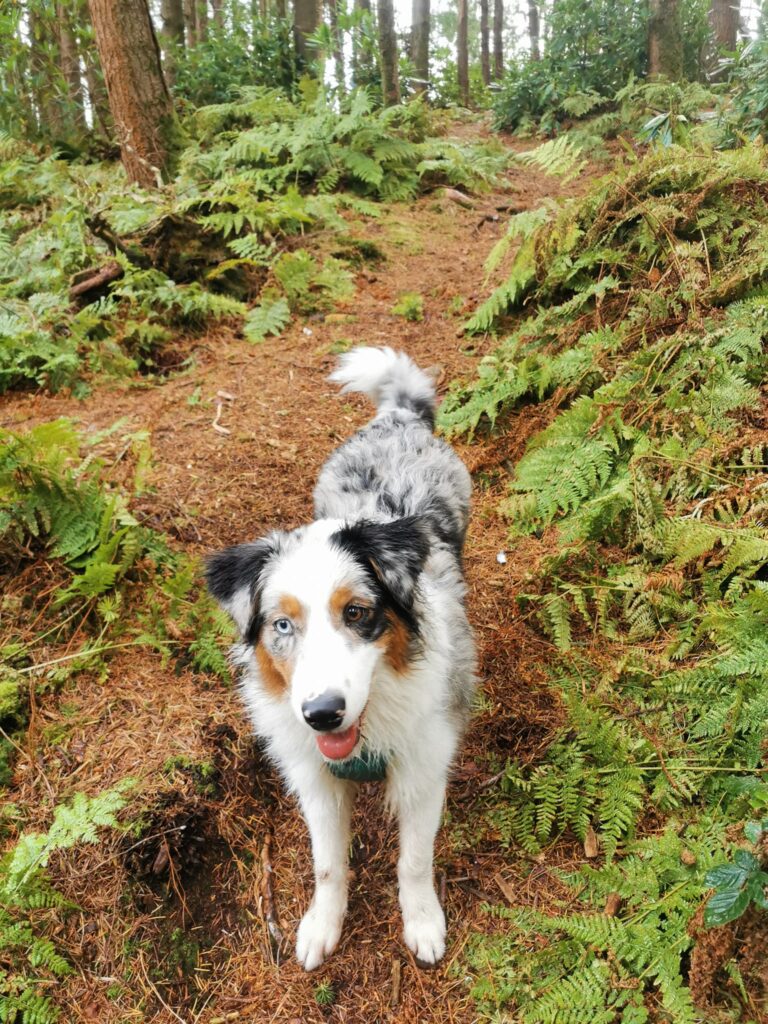In light of my most recent post on trigger stacking (you can catch up by clicking HERE), we’re going to be discussing how to combat stress build up. Decompression is the word I refer to when talking about preventing or reducing stress build up in my dogs. Remember that when it comes to trigger stacking, stress refers to anything that takes our dogs away from baseline be that bad stress or good stress like excitement.

Decompression Activities
I was going to make this content mostly about exercise but I think when any dog professional starts talking about exercise, a lot of assumptions are made and rarely are these helpful. So, we’re going to discuss decompression activities. These may or may not involve some sort of exercise but exercise is a side effect, not the goal of the activity.
When we talk about decompression activities, I want you to think about what your dog would choose to do if they had a whole day to fill. Think about if you have a day off, ignoring what needs doing, what would you choose to do? For me, I choose some gentle movement, maybe a walk, maybe a mobility workout to help relieve any tension in my muscles. I would add in some quiet time doing not very much, which may involve watching a movie or TV show that I’ve seen before and know the ins and outs of and is more background noise than entertainment. Then, I’d choose some brain work. A good book that I haven’t read before so the plot is a surprise to me. Finally, I’d be creative in some way but without any pressure of what the end product is. On the whole, nothing incredibly exciting nor nothing too stressful.
We want the same for our dogs.
We want the same for our dogs.
Core Decompression Activity Qualities
The core qualities of a decompression activity are:
- not too exciting – yes your dog enjoys it but no it’s not reducing the stress hormones building up in the body
- dog driven – decompression activities are all about what your specific dog finds decompressing and what they would choose to do with their day off. Not only do they get to choose the activity but they get to choose the intensity
- not training based – training can be stressful, good training generally isn’t but ideally the dog just gets to move and behave as they find natural
Examples of Decompression Activities
- A decompression walk. These are dog led, off lead, focus on sniffing, involve no toys, and minimal training, ideally out in nature.
- Chewing/Puzzle enrichment. Nothing that is too hard and causes the dog to worry about achieving their end goal. You want to think of playing a game where you know you can win but have a few seconds of challenge to get there.
- Sniffing. In whatever capacity you can offer it, scatter feeds, hiding toys (and then not playing tug/fetch with them), sniffing unusual places, etc.
- Snoozing in the sun.
Decompression Walks
These deserve a blog in and of themselves and I’ll be going into these in further detail later. But for now, I’ll refer you to the original creator of a decompression walk, Sarah Stremming of The Cognitive Canine and Cog-Dog Radio. She discusses decompression walks on her podcast in some depth. Some of my favourite episodes are HERE, HERE, HERE and HERE. I fully recommend listening to them before I go any further as I base my ideas in lots of the same places. The best place to learn some things is from the horse’s mouth!
The Functional Foundations
Decompression is key to the Functional Foundations, as I hope the last blog about trigger stacking made clear. I can’t wait to unpack decompression activities with you over the next few posts!
